Why are blue tits nesting in cigarette bins?
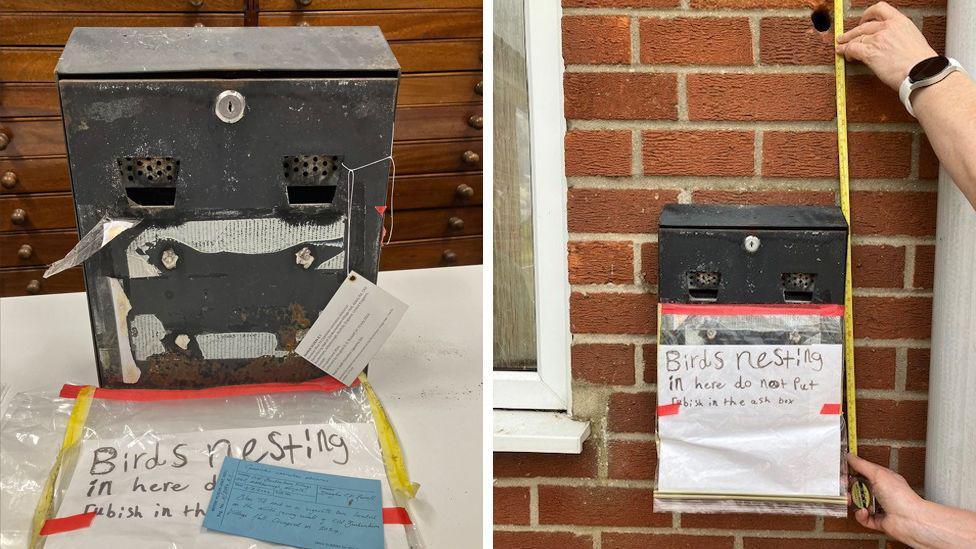
A cigarette bin used as a nesting site by blue tits was recovered from Old Buckenham in Norfolk for research into toxicity impact in the birds
- Published
Research is being carried out on why blue tits have been nesting in cigarette butt bins and if it could have any long-term impact on the birds.
Douglas Russell, a senior curator who is based at the Natural History Museum (NHM) in Tring, Hertfordshire, is carrying out the study after more tits were reported to be nesting in the bins.
The phenomenon has been noted anecdotally for some 20 years, said Mr Russell, who recently recovered two bins from Old Buckenham, Norfolk, and Harrogate, Yorkshire, where the birds had fledged.
Tests would be carried out on the boxes and nests to find out more about any toxicity passed onto the birds, and to establish if the bins need redesigning to prevent tits from nesting in them.
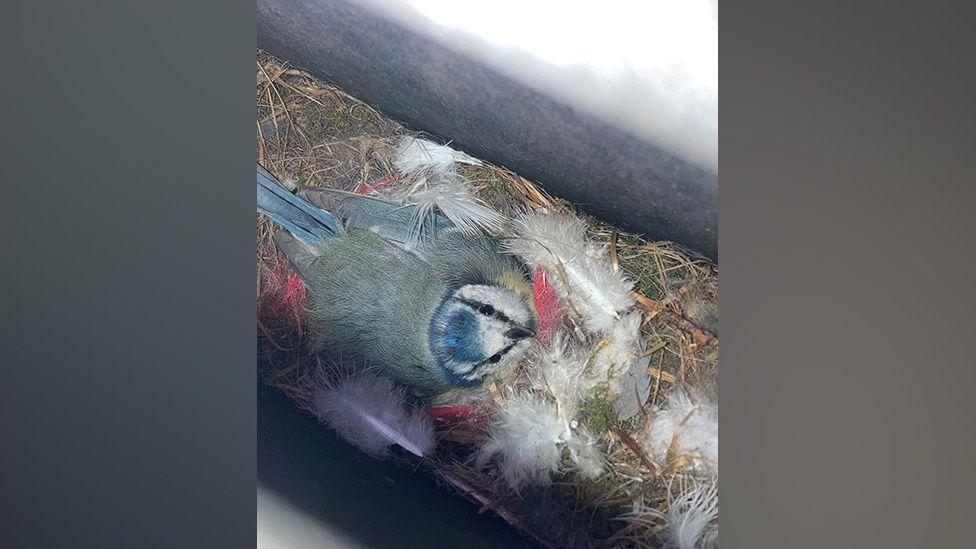
A blue tit nesting in a cigarette bin at Norwich Research Park earlier this spring
Mr Russell said it had been a challenge to get to the bins before they were emptied.
“I’ve tried for years to get examples of this. I think I’ve been trying since 2007. Every time it’s been too late. They get emptied or people won’t cooperate,” he said.
The nests that were collected in Norfolk and Yorkshire this July have been quarantined in a freezer, to prevent contamination, external to the museum's other collections.
They will now undergo scanning at the NHM in London.
"I am hoping to use the CT scanner to try and obtain a 3D model of the entire cigarette bins – this would, hopefully, allow us to describe the bins interior, including depth of nesting material, number of cigarettes etc," said Mr Russell.
Toxicology tests would also be carried out using swabs and samples of the interior of the bin, as the chicks and adults were exposed to this.
"We know there is at least one dead bird present in one of the bins – we may be able to remove some eggshell, feathers and tissues," continued Mr Russell.
Tests could demonstrate that beyond surface contamination, the birds have also absorbed the toxins, and that these may have been fatal.
"We would – I guess – expect the usual range of chemicals found in cigarettes and smoke (7,000+ chemicals) - including some 80 chemicals known to cause cancer," said Mr Russell.
"However, I think the major toxins we will want to quantify are probably tar, formaldehyde, hydrogen cyanide, benzene, cadmium, and nicotine."
Ironically, the existence of the chemicals would also mean the boxes were “extremely low on ectoparasites which tend not to be present because of the nicotine”, and something the nesting parents might seek.
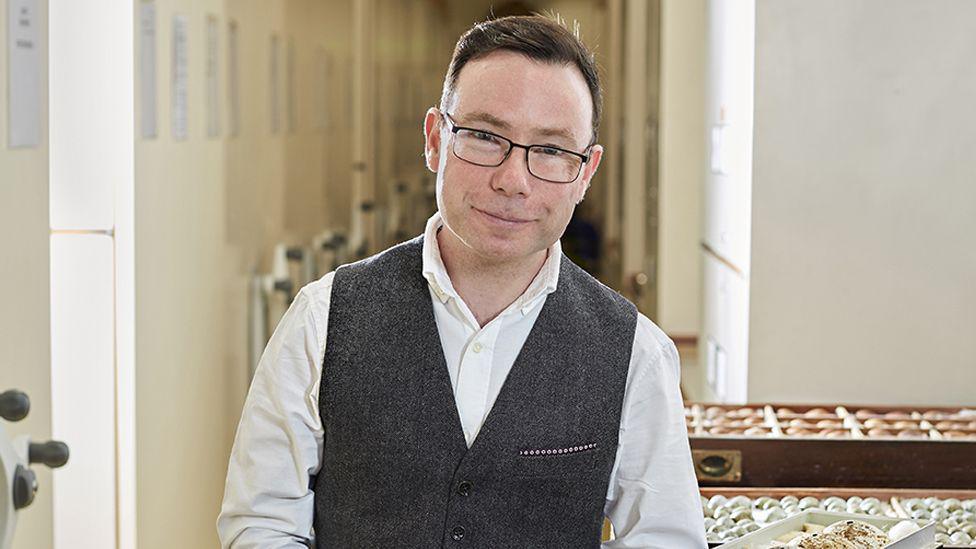
Douglas Russell is leading the research into the impact of blue tits nesting in cigarette bins
The museum's curator believed the boxes were attractive to blue tits because they have small entrances, and tits like to make homes in tiny crevices to protect them from predators.
The bins were designed to ensure not too much oxygen enters the container, thereby reducing the risk of a nest or other material catching on fire.
Mr Russell said another possible reason why the bins were popular with the birds was the uptake in vaping, which meant fewer smokers were actually using the bins to deposit cigarette ends.
"So what cigarette box manufacturers are doing inadvertently, is creating a fantastic nesting box for birds," he said.
"What I am trying to do is demonstrate how this behaviour is highly dangerous to the birds, and we need to motivate for a change in the design of cigarette bins to stop the birds prospecting them and using them as nest sites," he said.
"The problem is this is seen as ‘just a bit quirky and cute' – it isn’t.
"It is a sad indictment of the quality of nest sites urban birds are using."
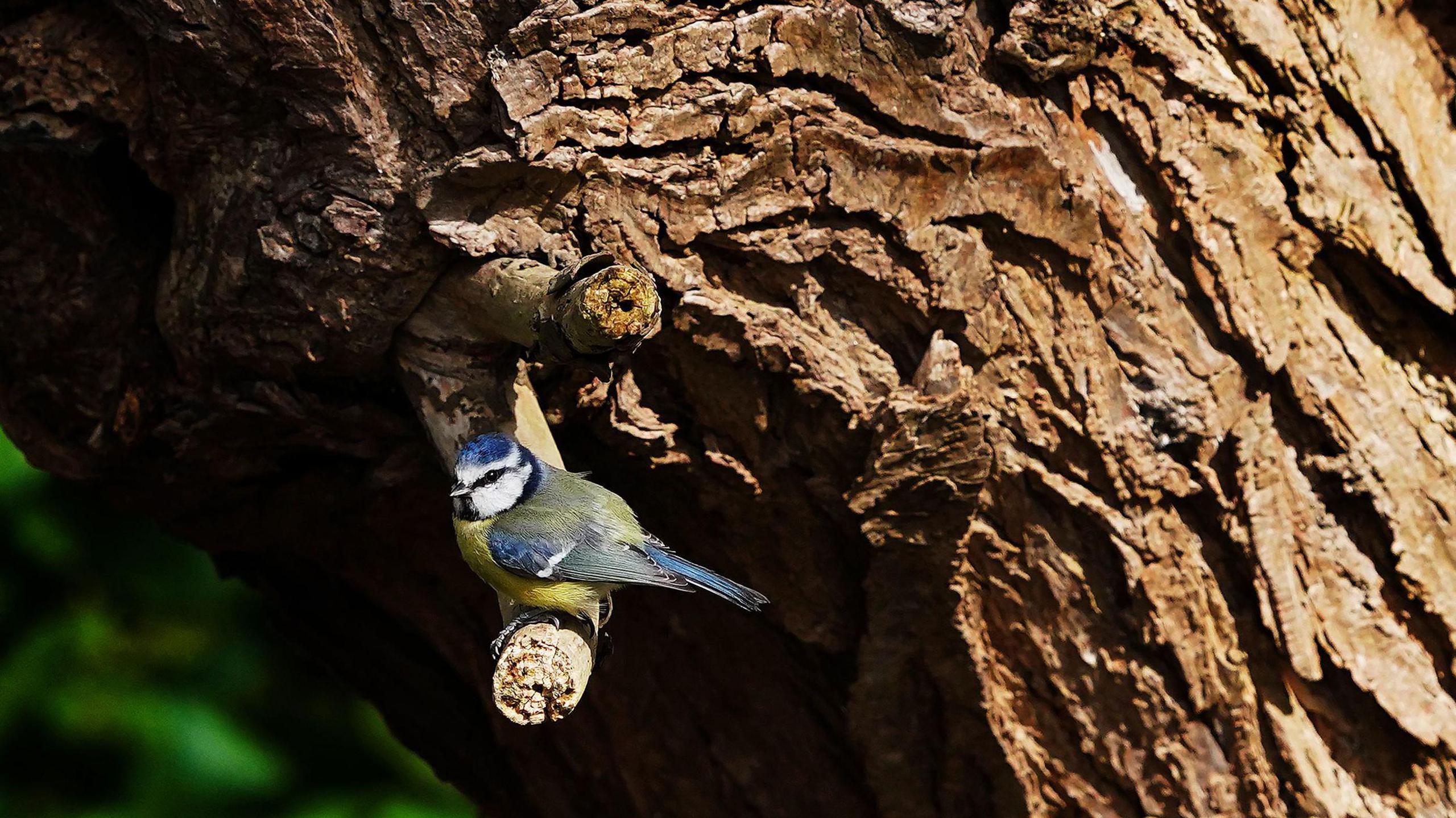
Mr Russell said blue tits nesting in bins should not be seen as "quirky"
Mr Russell said the use of the cigarette bins potentially meant more purpose-built nest boxes were required in all areas, including urban locations adjacent to wooded areas, as was the case with the Old Buckenham boxes.
The research will also test a few other natural blue tit nests and the NHM said it had at least 20 uncontaminated blue tit nest specimens, collected over more than 130 years, for comparison.
According to the British Trust for Ornithology, external the blue tit population has a green status meaning it is of least conservation concern.
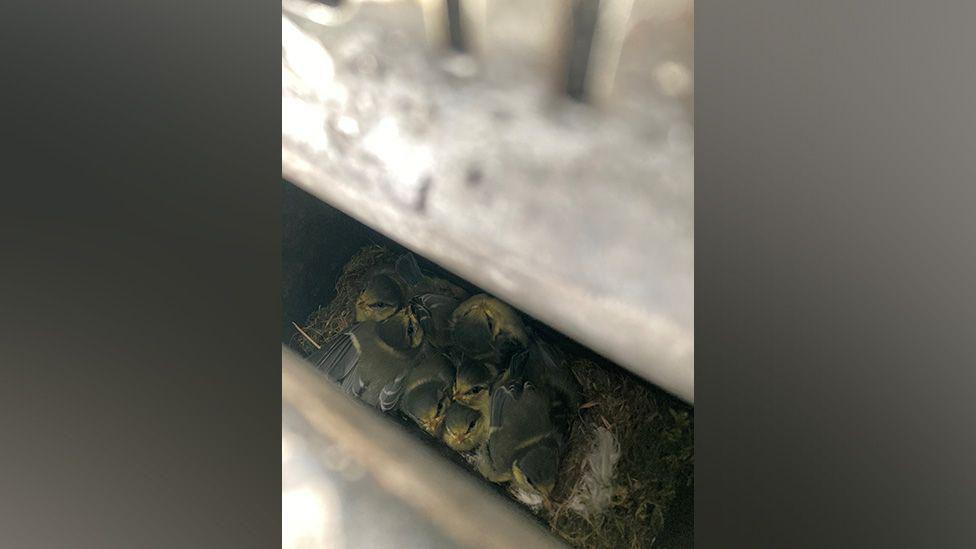
Ten chicks were found in this cigarette bin in Norwich recently
Get in touch
Do you have a story suggestion for Norfolk?
Follow Norfolk news on BBC Sounds, Facebook, external, Instagram, external and X, external.
Related topics
- Published5 June 2024
